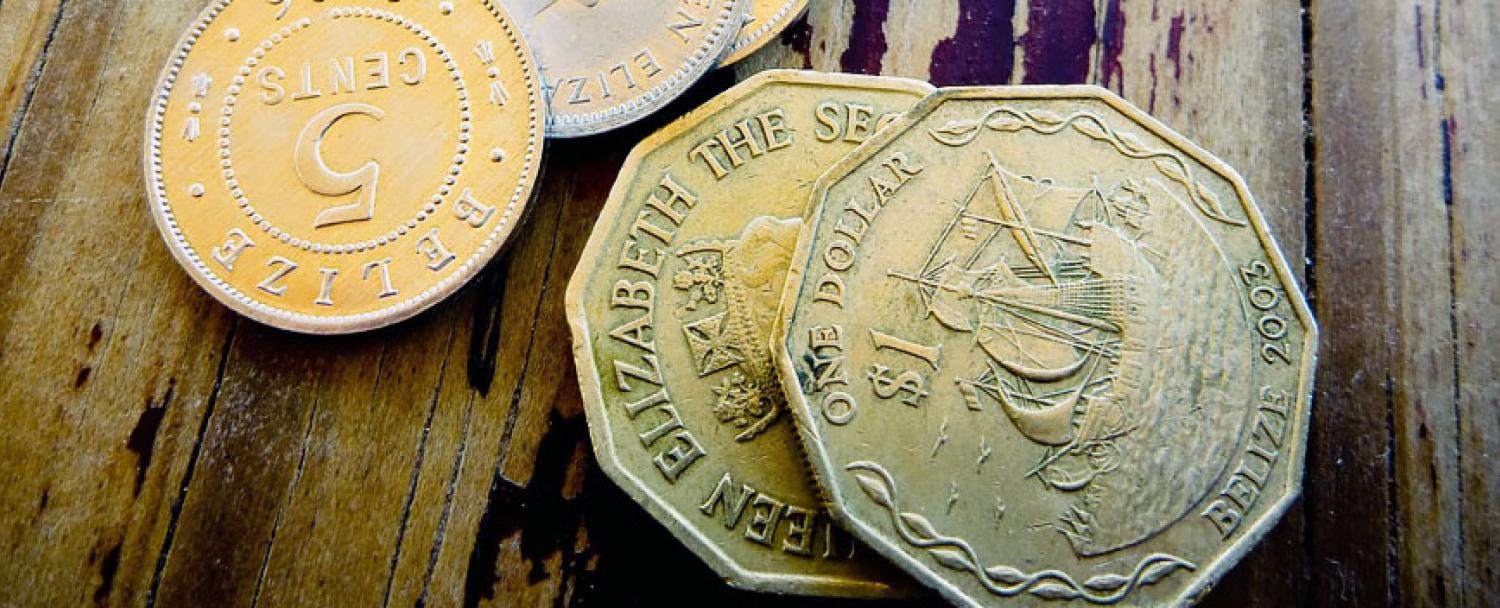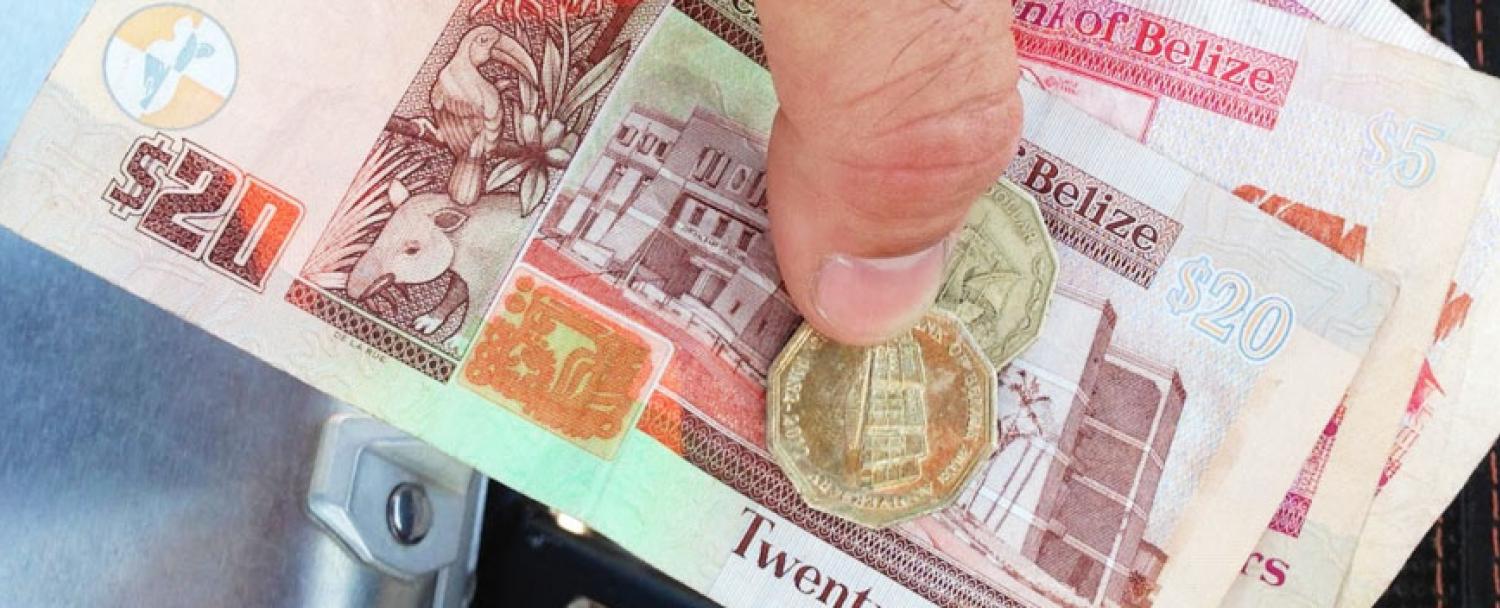Belize Economy
The Belize Dollar
Since the early days of the Maya Empire, to logging in the 1600s and on to tourism and offshore banking today, Belize’s economy has undergone many changes.
With a seacoast protected by the longest barrier reef in the hemisphere, Belize was an important centre of commerce for the ancient Maya, who traded in jade, seashells, cacao and other goods as far away as Panama and Mexico.
During the mid seventeenth century, many Caribbean buccaneers turned to logging in Belize, primarily cutting logwood for the indigo dye that was in demand by the British textile industry, and later for mahogany.
These pirates-turned-loggers joined other settlers and became known as the Baymen, Belize’s first European entrepreneurs, and forestry continued to be Belize’s main income earner well into the 1900s.
However, logging was a fickle business, with many fluctuations in demand and price. Between 1835 and 1841, for example, the price of mahogany dropped by 50 percent. And with no trees planted to replace what was being cut, the loggers had to go deeper and deeper into the forests, driving up their costs in an unsteady market with a very finite product. As the roller coaster economy of forestry declined, the sugar industry, primarily in the north, rose to take its place.
Early landowners hoped to emulate the success of other Caribbean colonies in sugar production, but for a variety of reasons, including extraordinarily high British taxes, Belize remained uncompetitive.
However, by the early to mid 20th century, more diversified agriculture, including citrus and bananas in the southern districts resulted in a more viable economy, but one still subject to world demand and natural disasters such as hurricanes and disease.
During this time a wealthy merchant class also developed in Belize. As virtually all goods and most foodstuffs were imported, merchants conducted a lively trade and became a powerful segment of society.
The American Civil War was profitable for those trading with the confederate states of the South, and by the 1920s more and more Central American trade passed through Belize. The US Prohibition also provided opportunities for the rum trade and those willing to run alcohol to the North.
By the 1950s sugar had replaced forestry, and today tourism is the number one foreign exchange earner followed by exports of marine products, citrus, cane sugar, bananas, and garments.
Exports are primarily to the US and UK, and tourism continues to grow rapidly, as Belize’s extraordinary environmental resources become better known and the tourism infrastructure continues to improve.
Due to relatively high labour costs as compared to the rest of the region, along with low population density and lack of investment in infrastructure, domestic industry in Belize is very limited.
However, some 185 US companies operate in Belize, and investment continues in tourism, agriculture, energy and telecommunications.
Belize has about 809,000 hectares of arable land, only a small fraction of which is under cultivation.
Commercially viable oil reserves were discovered in 2006 at Spanish Lookout, a Mennonite farming community, and the resultant crude oil production has spurred further investment.
Belize enacted the International Business Companies Act in 1990, and since then has registered more than 15,000 International Business Companies. IBCs are popular for international financial transactions and for a wide variety of activities ranging from asset protection to operating bank accounts, brokerage accounts, ship ownership, commission arrangements and other commercial transactions.
The Trusts Act of 1992, which provides for both onshore and offshore trusts, also has attracted the attention of foreign investors.
Since the early days of high seas adventure and logging through to the challenges of today’s global economy, the Belizean economy has been buffeted and buoyed by many external forces, but has proven to be resilient in providing one of the highest standards of living in the region.
With the rise of the global service economy, technological advances and other factors, Belize continues to represent huge potential as a growing regional economy.
The Belize Economy Snapshot (figures are estimated in US Dollars)
GDP (purchasing power parity):
$2.534 billion (2009)
GDP (official exchange rate):
$1.407 billion (2009)
Exchange rates:
Two (2) Belizean dollars (BZD) per one (1) US dollar
GDP - per capita (PPP):
$8,200 (2009)
$8,200 (2009)
GDP by sector:
agriculture: 29%
industry: 16.9%
services: 54.1% (2008 est.)
Labor force:
122,300 (2008 est.)
Labor force - by occupation:
agriculture: 10.2%
industry: 18.1%
services: 71.7% (2007)
Unemployment rate:
8.1% (2008 est.)
Budget:
revenues: $376.5 million
expenditures: $412.5 million (2009)
Inflation rate (consumer prices):
0.3% (2009)
Commercial bank prime lending rate:
14.14% (2008)
Agriculture - products:
bananas, cacao, citrus, sugar; fish, cultured shrimp; lumber; garments
122,300 (2008 est.)
agriculture: 10.2%
industry: 18.1%
services: 71.7% (2007)
8.1% (2008 est.)
revenues: $376.5 million
expenditures: $412.5 million (2009)
0.3% (2009)
14.14% (2008)
bananas, cacao, citrus, sugar; fish, cultured shrimp; lumber; garments
Industries:
garment production, food processing, tourism, construction, oil
Electricity - production:
213.5 million kWh (2007 est.)
Electricity - consumption:
198.5 million kWh (2007 est.)
Oil - production:
3,511 bbl/day (2008 est.)
Oil - exports:
2,260 bbl/day (2007 est.)
Oil - proved reserves:
6.7 million bbl (1 January 2009 est.)
Exports:
$395 million (2009 est.)
198.5 million kWh (2007 est.)
3,511 bbl/day (2008 est.)
2,260 bbl/day (2007 est.)
6.7 million bbl (1 January 2009 est.)
$395 million (2009 est.)
Export commodities:
sugar, bananas, citrus, clothing, fish products, molasses, wood, crude oil
Export partners:
US 35.6%, UK 21.5%, Cote d'Ivoire 5.3%, Italy 4.5%, Nigeria 4% (2008)
Imports:
$616 million (2009 est.)
Imports - commodities:
machinery and transport equipment, manufactured goods; fuels, chemicals, pharmaceuticals; food, beverages, tobacco
Imports - partners:
US 37.4%, Mexico 12.9%, Cuba 7.7%, Guatemala 6.1%, Russia 5%, China 4.2% (2008)
(sources: 2010 CIA World Factbook and others)

Meshack Yahani Eliah , Naturalist Guide

 The personal attention is spectacular - never lose that touch - it is what makes this place so special. Raul & Miguel were especially kind & attentive.
The personal attention is spectacular - never lose that touch - it is what makes this place so special. Raul & Miguel were especially kind & attentive. 













